Japanese are famous for their sword making. Though the demand for swords has greatly declined at late 19th century, the techniques have been transferred into the making of knives and scissors/ shears. Most of the ikebana shears today (I will refer it as hasami from here) are still made in a similar way to their bigger counterpart- samurai swords. Hand forged with most care by craftsmen. The blades give sharp precise cut with ergonomic handles that make a pleasant “click” as the ends meet. They are work of art themselves; giving me much pleasure every time when I have a pair in hand.
No, it is NOT absolutely essential to use them in ikebana. But they are extremely helpful in making the precise cuts for arrangements. Splitting the ends of Shin and Soe for a basic nageire is so much easier with the hasami. I will explain here why they are very good tools.
Metal
The common pair of hasami is made of steel with black oxide handles and shiny polished blades. The steel used has a very high carbon content that makes the blades extra sharp. Though the size of these blades are not big, they are capable to cut not only stems but also branches.
Types of Shapes
There are a 2 different kinds that are commonly used: The Ikenobou Style and Koryu Style
The Ikenobou (池の坊) type is most likely the more common one. With no “loops” at the handles, they are very slim and light to carry around, taking up very little space in the tool roll. It is so easy to move around small spaces with their slim profile. They range from 130mm to !80mm in length with 165mm being the most common size. My 165mm hasami is only about 60mm wide which is almost the same size of the scissors I have on my desk! They are precise enough to can cut thin leaves but also sharp enough for branches. One pair will take you a long way (that is if you take care of them)!
 aqI From L to R: Plain black oxide finish, oxide finish with wire cutting notch, painted finish, stainless steel
aqI From L to R: Plain black oxide finish, oxide finish with wire cutting notch, painted finish, stainless steel
The Koryu (古流) style is very similar to the ikenobou. They have the same blades except the Koryo ones have the “butterfly” loop handles. They are also commonly found with black oxide finish or stainless steel.
Both types are rivet joined in the middle with NO spring grip. Beginners are often at loss with how to grip them, especially with the Ikenobou ones which has NO loop handles. The rivet is usually pretty loose that the hasami will open as the bottom handle drops if only the top hand is held like this:
The is the magic of this type of hasami. It works with gravity to open the blades and only requires effort when closing to cut. Hold the top handle with the thumb and use the other fingers to close the bottom handle to cut. It is just that simple with only a few components.
Caring
Unless you have a pair of stainless steel ones, the traditional pair with high carbon will need some care. The black oxide coating which is normally on 95% of the hasami is only good to prevent corrosion on the handles and the body. The shiny blades will turn dull once in contact with water and it eventually turn into black patches if left uncleaned. Some plants with saps will turn the black immediately upon contact as well. This is due to the hight carbon content in the metal and special care has to be taken to prevent further rusting.
While in use, wipe the blades frequently. Have you seen sushi chefs frequently wiping their knives with a towel in between slicing? Do the same. Sushi knives are made in a similar way with the high carbon steel which the moisture of the food not only “rust” the blade but the rust can also leave an undesirable taste back on the food. Carry a dry cloth to do the same with the hasami- wipe it in between cuts. At the end of the day, dry them thoroughly and coat it with oil before putting storing away. However, despite vigilant wiping, a dull grey surface called “patina”, will eventually formed through the years. Some think that the patina adds character to the tool; making it personal to the owner.

If the hasami left uncleaned for a long time, black rust will form and a bit of effort will need to clean it out.
In the last decade, I have purchased 4 pairs of hasami because I did not know how to clean them until finally bought a stainless pair 6 years ago. Recently, I found out ways to restore them. The methods are similar to cleaning high carbon sushi knives. If you want more info, search the internet for “cleaning high carbon steel knives”. Here is what I have learnt:
Metal Cleaner
Use the metal cleaner to clean as much of it as possible. They usually come in a form of cream in a tube or lotion. I found it effective to take most of the rust away. Select one that is gentle enough so that it will not corrodes your blades. You can find them at hardware stores. Follow the manufacturer’s instructions carefully and remember to wear gloves.
Rust Eraser

They are like mini grinding stone. Volcanic rocks are plentiful in Japan and they are good as whetstone. However, these stones works better when used with water and same with this Japanese rust eraser. First, wet your eraser. Observe how the grain on your blade runs and rub the eraser in the same direction. Very quickly, you will see the black rust fading away. The eraser basically grind away the rust and will definitely leave markings on the surface, therefore it is important to work along the grains already on the blade.

My hasami is 8 years old and so patine has already formed on it that made the blade slightly dull even after rubbing with the eraser. I have no problem with that and just as happy that the rust has gone and now the hasami operates smoothly. Like sandpaper, the eraser comes in different grades. I bought a medium one.
Some hasami has movable bolts on the rivet so that the blades can be take apart for cleaning.
I think the best way is to prevent rusting by wiping the hasami constantly when in use. I found that the easiest way to carry a wiping cloth with my hasami is to make a hasami case with one so that I can use the case to “wipe” the tool and I shall always have a cloth close by. I have found a tenugui (Japanese cotton towel) wallet folding/wrapping instructions which can be easily modified to fold into a case for the hasami. And when the tenugui needs a wash, it can be unfolded, washed and refolded again.
I will share the instructions next time.
To protect the blades from rusting, you can also apply a thin layer of knives oil. If this particular oil is unavailable, good quality sewing machine will also do the job.










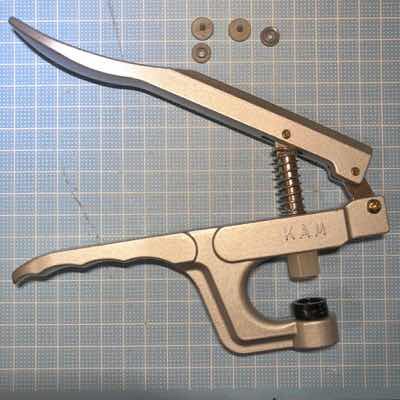


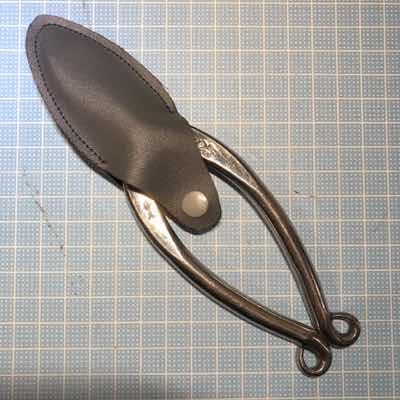
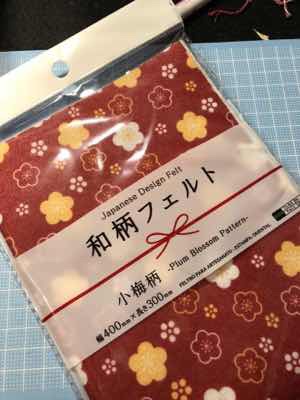


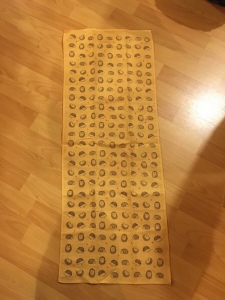


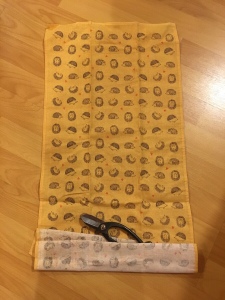


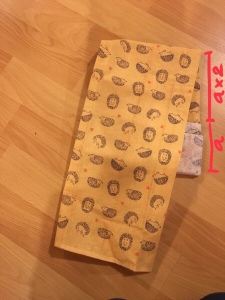







 aqI From L to R: Plain black oxide finish, oxide finish with wire cutting notch, painted finish, stainless steel
aqI From L to R: Plain black oxide finish, oxide finish with wire cutting notch, painted finish, stainless steel







